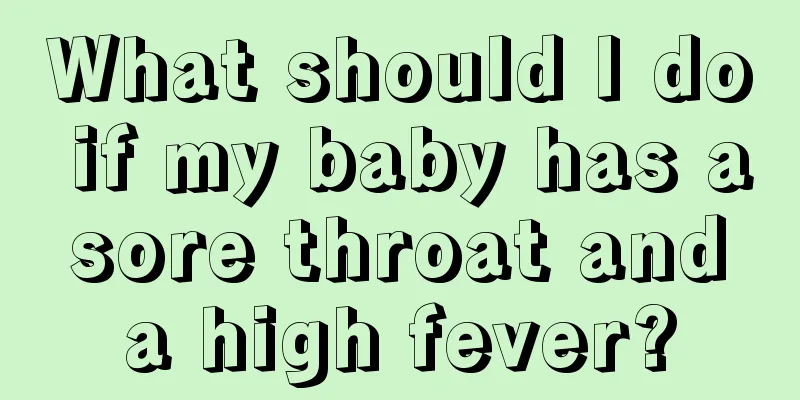Where should I apply the foot patch when my child has a fever?

|
When many children have a fever for some reason, their parents will use some methods to reduce the fever for their children, among which the fever-reducing patch is a very common medicine. Many parents will use fever-reducing patches to treat their children's fever, but many parents do not use the fever-reducing patches correctly. So, where should the foot patch be applied when a child has a fever? First, where should the foot patch be applied when a child has a fever? Foot patches can be used when a child has a fever. Foot patches are easy to use. Apply the medicine bag to the acupoints on the soles of the feet before going to bed and remove them after getting up. But please note: 1. Foot patches are health products, not medicines, and cannot cure diseases. 2. The main function of the foot patch is to stimulate the reflex area of the sole of the foot, help improve one's own immunity, and have a disease prevention effect. 3. There are many reasons for coughing, including influenza, inflammation, and lung problems. Foot patches may not have a direct effect. 4. For physical illnesses, it is recommended to seek medical treatment or take medication. Do not rely too much on foot patches and delay the treatment. As a health care product, foot patches are the safest, most efficient and convenient health care tool nowadays. Its working principle is to allow the various Chinese herbal essence ingredients in the patch to penetrate into the abundant acupuncture points on the sole of the foot and be introduced into the circulatory system. During the circulation process, it absorbs toxins retained between cells in the body and effectively removes toxins and moisture that have accumulated in the body for a long time. In a short period of time, it can eliminate skin spots and acne, improve constipation, eliminate bad breath, shape the body, lower blood lipids, blood pressure, and blood sugar, increase skin gloss, improve sleep, and delay aging. Sticking it on the joints can eliminate pain and fatigue, and has very good effects on arthritis, cervical spondylitis, etc. The foot patch can also absorb unnecessary water, lymph and waste oil from the human body and turn them into turbid liquid. When you feel tired or in pain, after using this patch, the patch bag will turn brown or dark brown, and all the waste oil and waste liquid will be sucked out. Second, the fever patch is suitable for auxiliary treatment of fever caused by various reasons and emergency physical cooling to relieve fever. Headache, nasal congestion, irritability and other uncomfortable symptoms can help reduce the damage caused by fever to brain cells. The concept of cooling patch first spread from Japan to China. It uses the internationally popular TDDS technology to allow water and drugs to penetrate the skin, and then achieve the effect of lowering body temperature through the physical change of water vaporization and heat absorption. It is a physical cooling product and is widely used in children's fever, summer heat relief and high-temperature work. However, a cooling patch can generally work for four to eight hours, and generally the longest cooling patch can be used is 10 hours. However, the cooling patch is a physical way to cool down the baby, but using it for a long time will cause allergies to the baby's tender skin, so you can remove it when the baby's body temperature is below 38 degrees. Where should the foot patch be applied when a child has a fever? When a child's fever does not exceed 38 degrees, medication is not recommended, and a fever-reducing patch is recommended. When a child's body temperature exceeds 39 degrees, he or she should take antipyretics to prevent the high temperature from damaging the baby's brain. It is recommended that as long as the baby's body temperature exceeds 38.5, antipyretics should be taken, because the antipyretic patch is only an auxiliary role, it just makes the baby less uncomfortable, and it cannot reduce the fever. You can keep the fever-reducing patch on and drink more water. |
<<: What should I do if my child has a fever of 381 degrees?
>>: What should I do if my child has a cold, fever and runny nose?
Recommend
Milk volume for a two-week-old newborn
Every parent hopes that their baby can grow up he...
Children with rhinitis have stuffy nose when sleeping at night
During the day, because the body is vertically ho...
Are babies more sensitive to heat than adults?
Taking care of a baby is something that requires ...
What are the symptoms of hernia in boys?
Many mothers are always worried about their child...
What should I pay attention to when my baby has sinusitis?
Sinusitis is an inflammation of the sinus mucosa ...
Why is my baby's head hot and his hands and feet cold?
It is common in clinical practice that children h...
What to do if your child has a fever
Children are very lively and active, and often pl...
Does your child have trouble walking after getting an injection?
Under normal circumstances, children will not exp...
Is isotope therapy effective for neonatal hemangioma?
Isotope therapy is a treatment method that is mos...
What is the treatment for farsightedness in children?
Hyperopia in children is a type of eye disease in...
Three-month-old baby care method
Nowadays, many parents are most concerned about t...
What to do if your baby's lips are broken
Children are lively and active, and they have no ...
Is it better for children to drink milk in the morning or at night?
Family conditions are good now, and children need...
What should babies eat when they have nosebleeds?
Children are prone to nosebleeds. There are many ...
What to do if your 8-month-old baby coughs and has phlegm
When an eight-month-old baby starts coughing and ...









